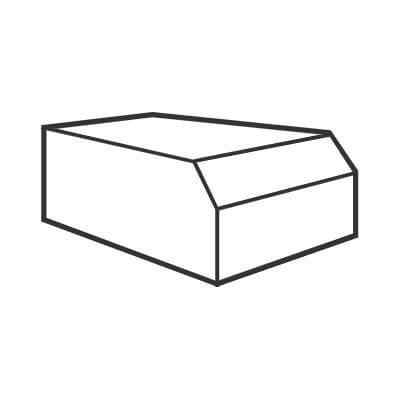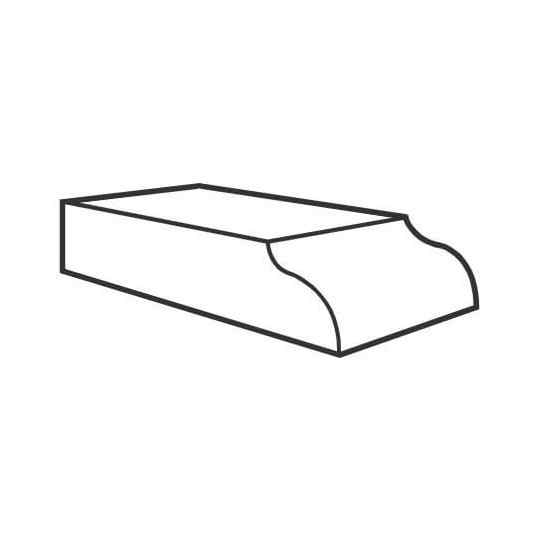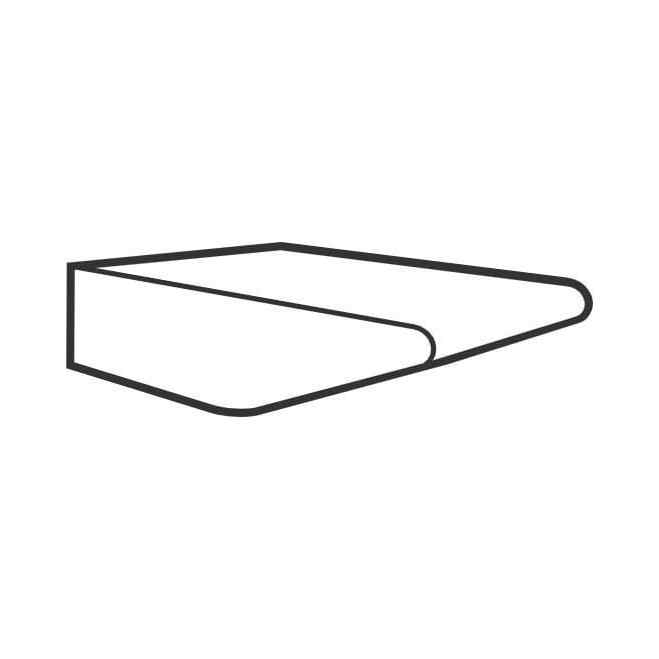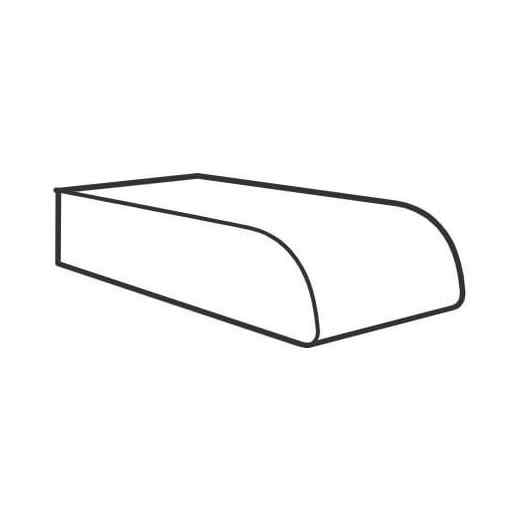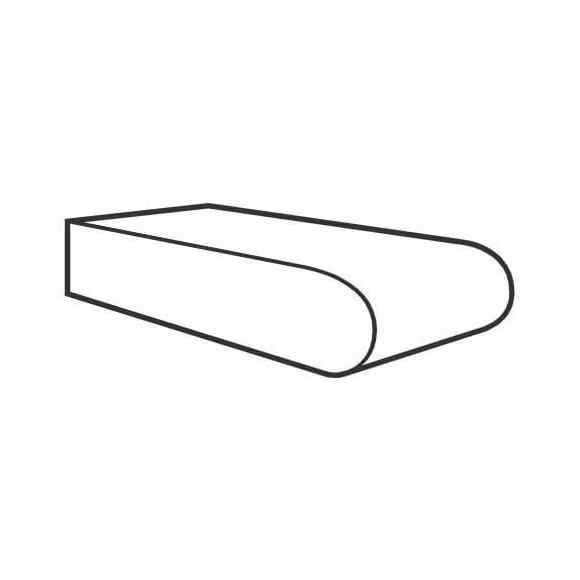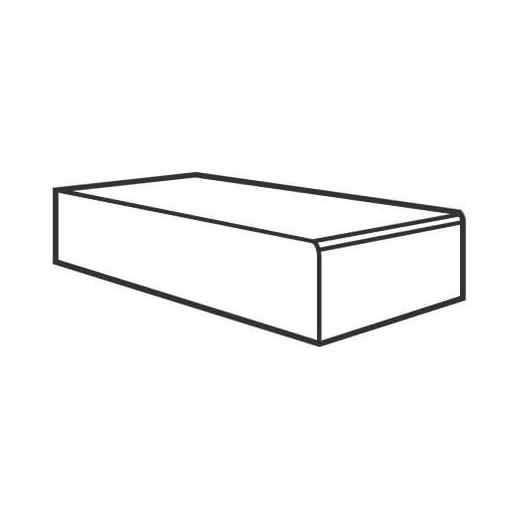Though wood countertops are having a moment, the reality is that their functionality is not up to par with modern manufactured solid-surfaces or “engineered” quartz.
Quartz countertops will remain the most popular countertop trend
White countertops with grey or other light accent colors like Silestone Ethereal Glow still top searches.
It helps that quartz countertops are more consistent in price than natural stone countertops like Granite or Marble. Silestone will cost around $90 to $180 a square foot installed.
Countertops with Matte Finishes
Polished countertops have always appealed to the masses but now the trend is moving toward a matte finish. Since a matte finish is smooth to the touch and no shine, it hides scratches, stains, and flaws. It imparts a slight gloss to highlight the stone’s natural contours and colors. A diamond-tipped brush is used to obtain a smooth and rough textural finish.
Honed and leather surfaces are common too… they can be applied to many different materials, such as granite, marble, and quartz. Even though polished is still the most popular, there are advantages to these two others.
Honed finish is a matte finish with little to no shine. The overall look will vary depending on the stone type, but it should have a low sheen and a smooth surface. Honed finishes work well with marble, since its lack of shine conceals any flaws or scratch marks more readily.
Leathered finish is a newer style of treatment that has become more popular in recent years. It has a soft sheen, that is less glossy from a polished slab, and to the touch has a different feel. The leather finish retains the stone’s natural color giving it a more sophisticated look than honed. It also hides fingerprints and water spots remarkable well, which is very appealing to many.
Full-height Slab Backsplashes
Frustrated by classic subway tile or can’t find a complimentary backsplash for your kitchen coutner? This year we can expect to see less tile and more stone. A slab backsplash has a beautiful and timeless design. While tile backsplashes can be trendy and change often, a full-height backsplash gives your kitchen a look that never goes out of style. This is also perfect for a clean, seamless look with no grout lines.
Like with the all-white and grey trend, this is just too much. Let your eyes rest! And for god sakes, you’re not running a commercial kitchen are you? What do you need a full-height backsplsh for?
color coming back into homes: Reduce shine to feature color, aesthetics, and style
Will Different Countertops for Islands Continue to Trend?
With kitchen islands being one of the most popular layouts for the kitchen, it has become a focal point. In 2022, 41% of the interior design professionals surveyed said using different countertops on the islands from the perimeter cabinets will be a big trend this year. Separate cabinetry will need better matching countertops for each section as well, so there you go.
Sometimes this can be subtle.. the colors of the perimeter and island will inverse; light cabinets with dark countertop on the perimeter and dark cabinets with light countertop on the island. Other times, the countertop material may change to something very dramatic on the island like when you use a mellow, traditional color on the perimeter with a wild and colorful quartz countertop on the island.
As long as the entire design is cohesive, there is no wrong way to go about mixing and matching your countertops.
Waterfall Counters, Kitchen Islands & Tables
Structurally and architecturally, Waterfall countertops are phenomenal. Could they be executed slightly better? Sure! Enough with the greys already!
It’s been one of the biggest trends in 2022. Waterfall islands are created by a countertop that makes a 90-degree turn at the edge, and follows the cabinet side to the floor. The countertop material is usually mitered, so that it makes a sharp angle as it turns downward. This creates a very contemporary, sleek look for the island that can become the focus of the kitchen design.
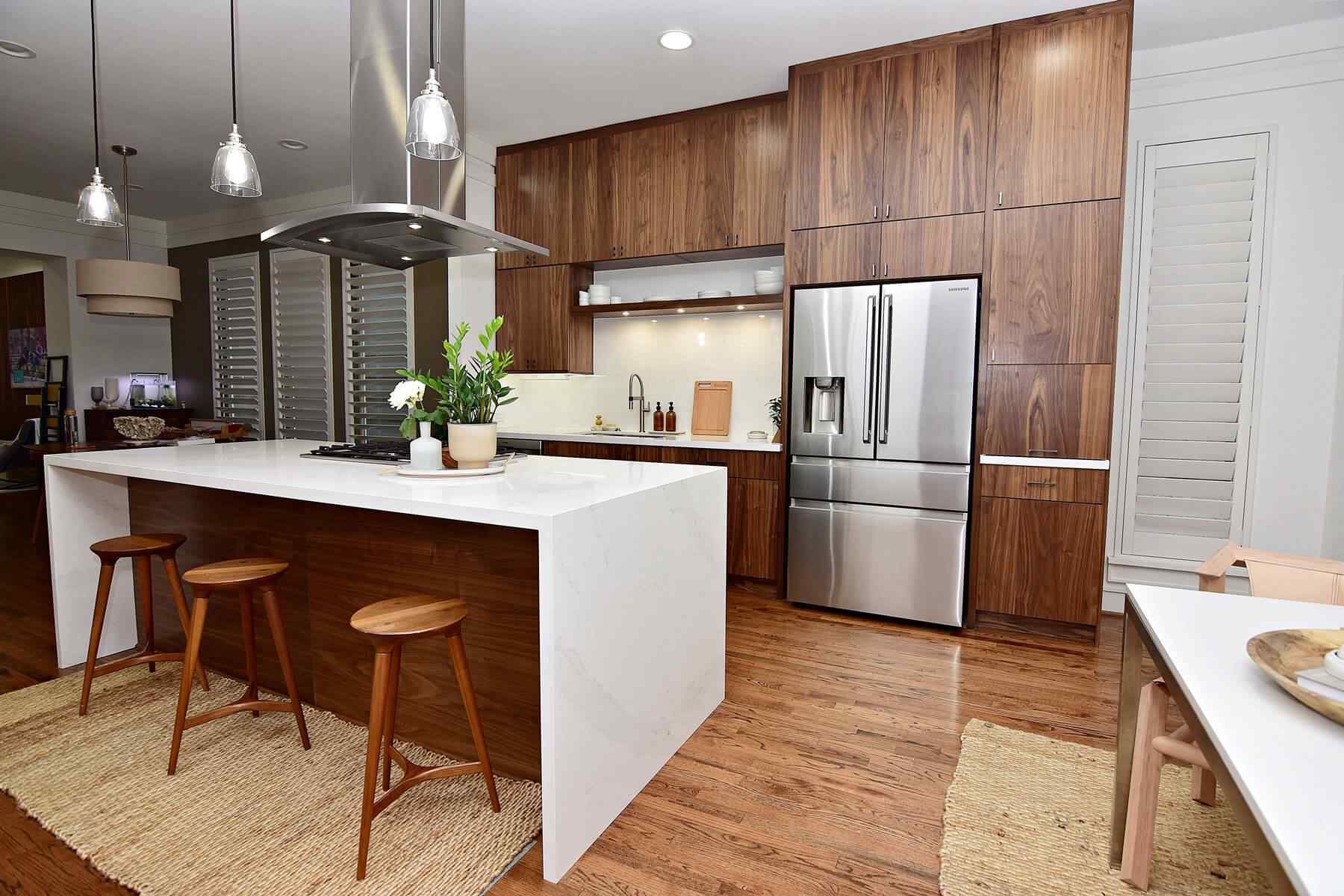
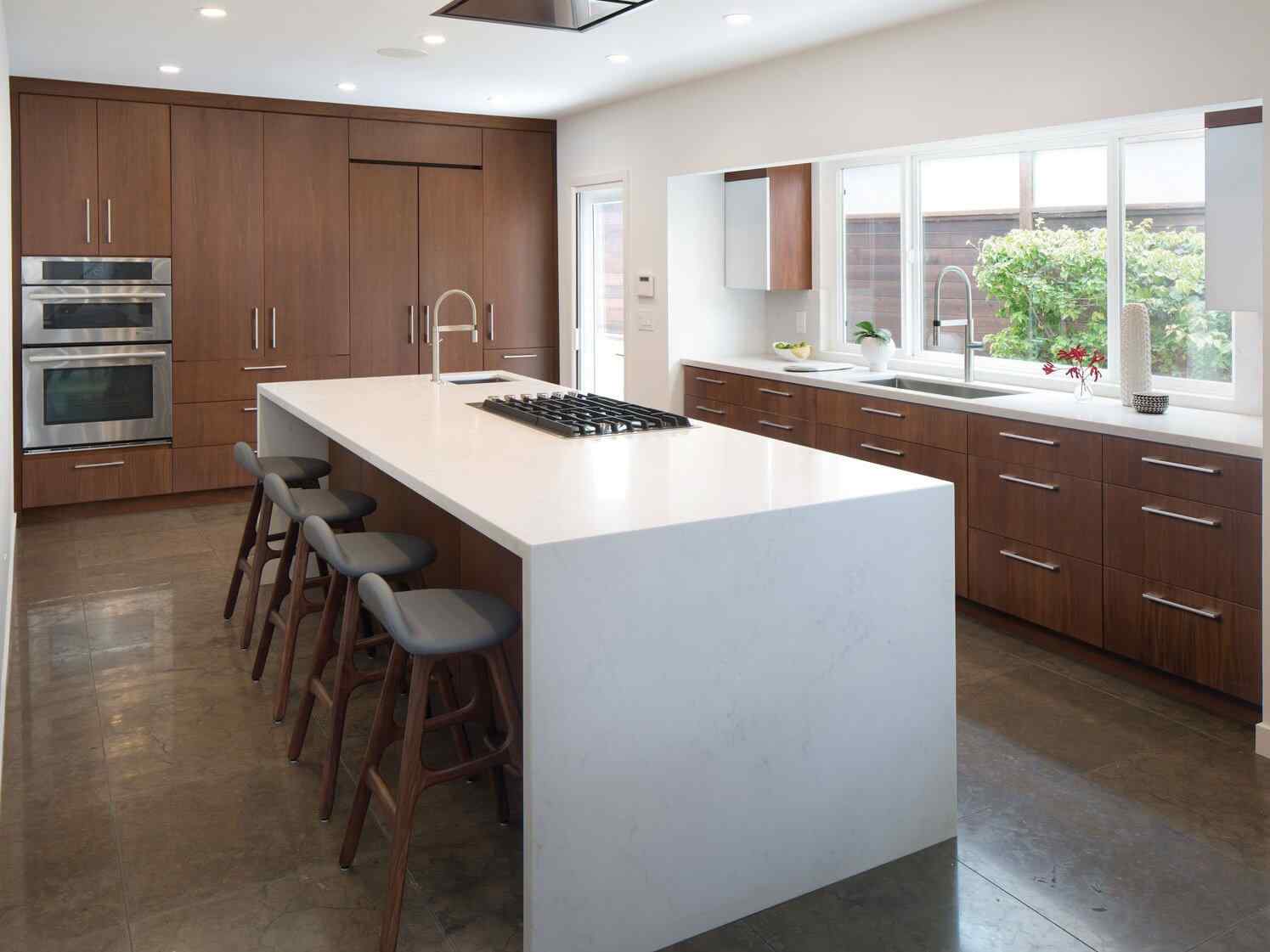
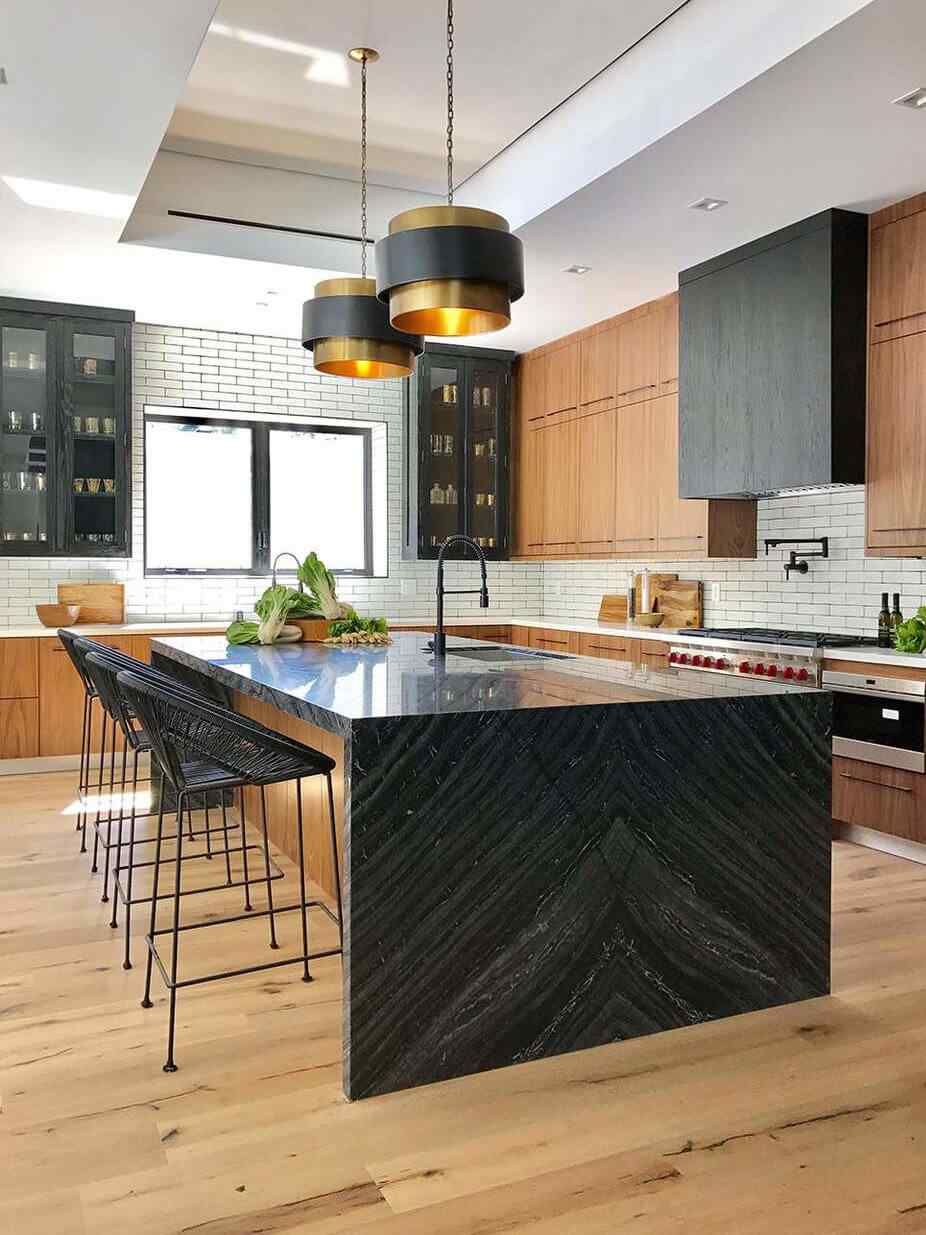
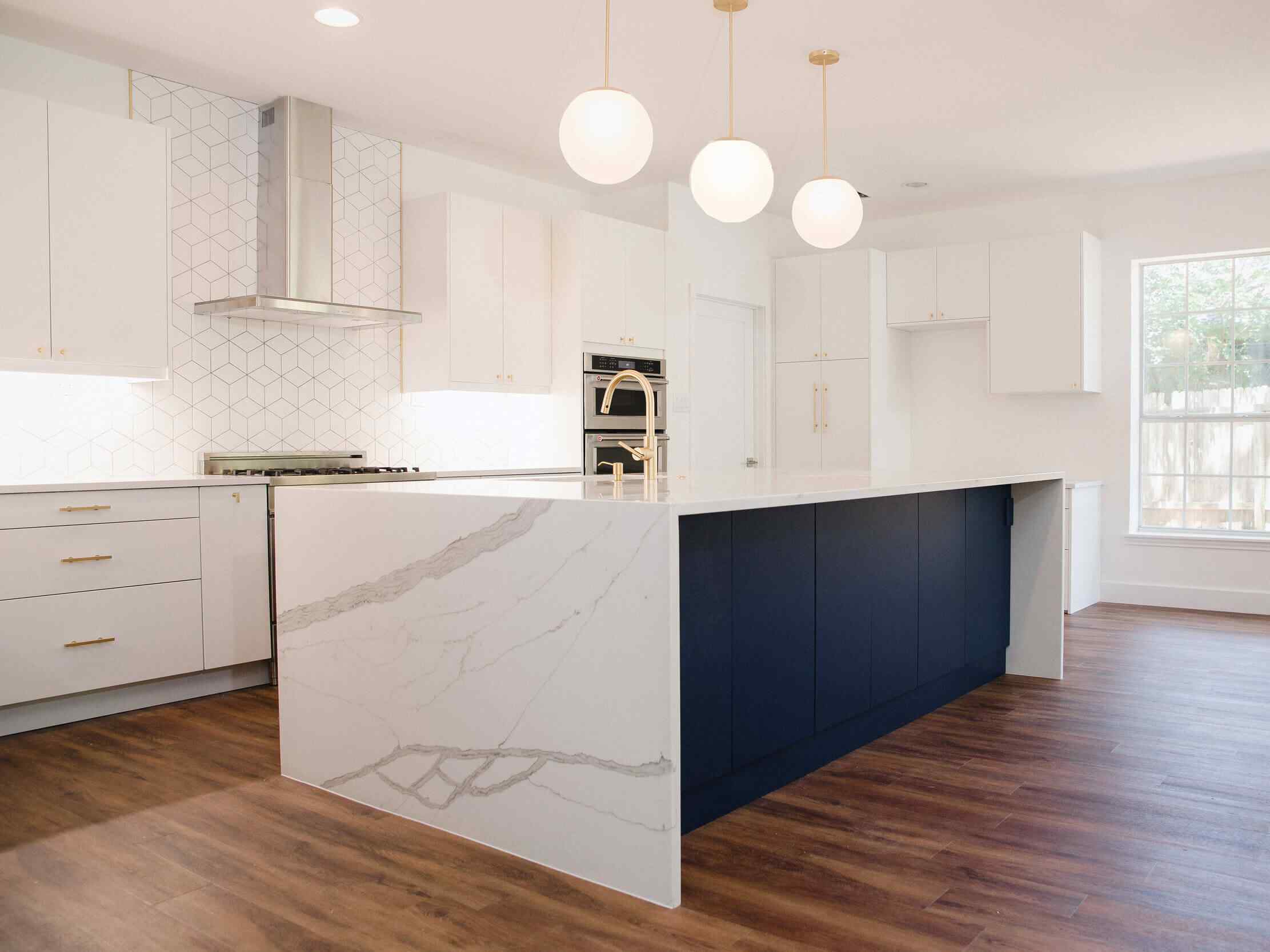
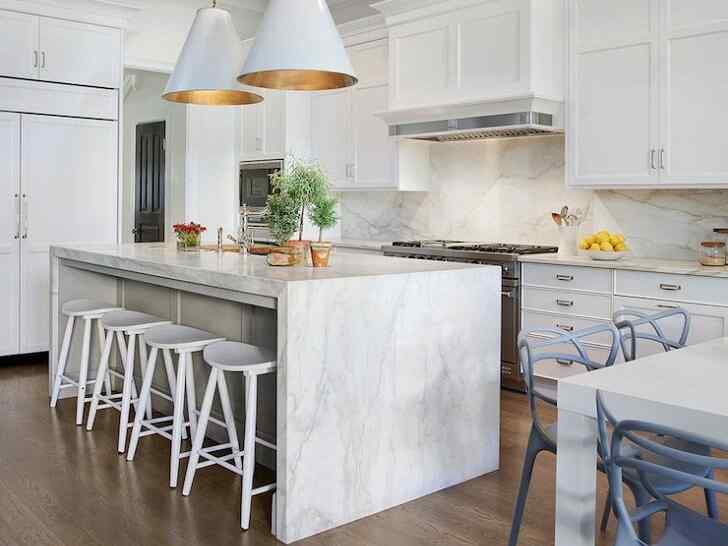
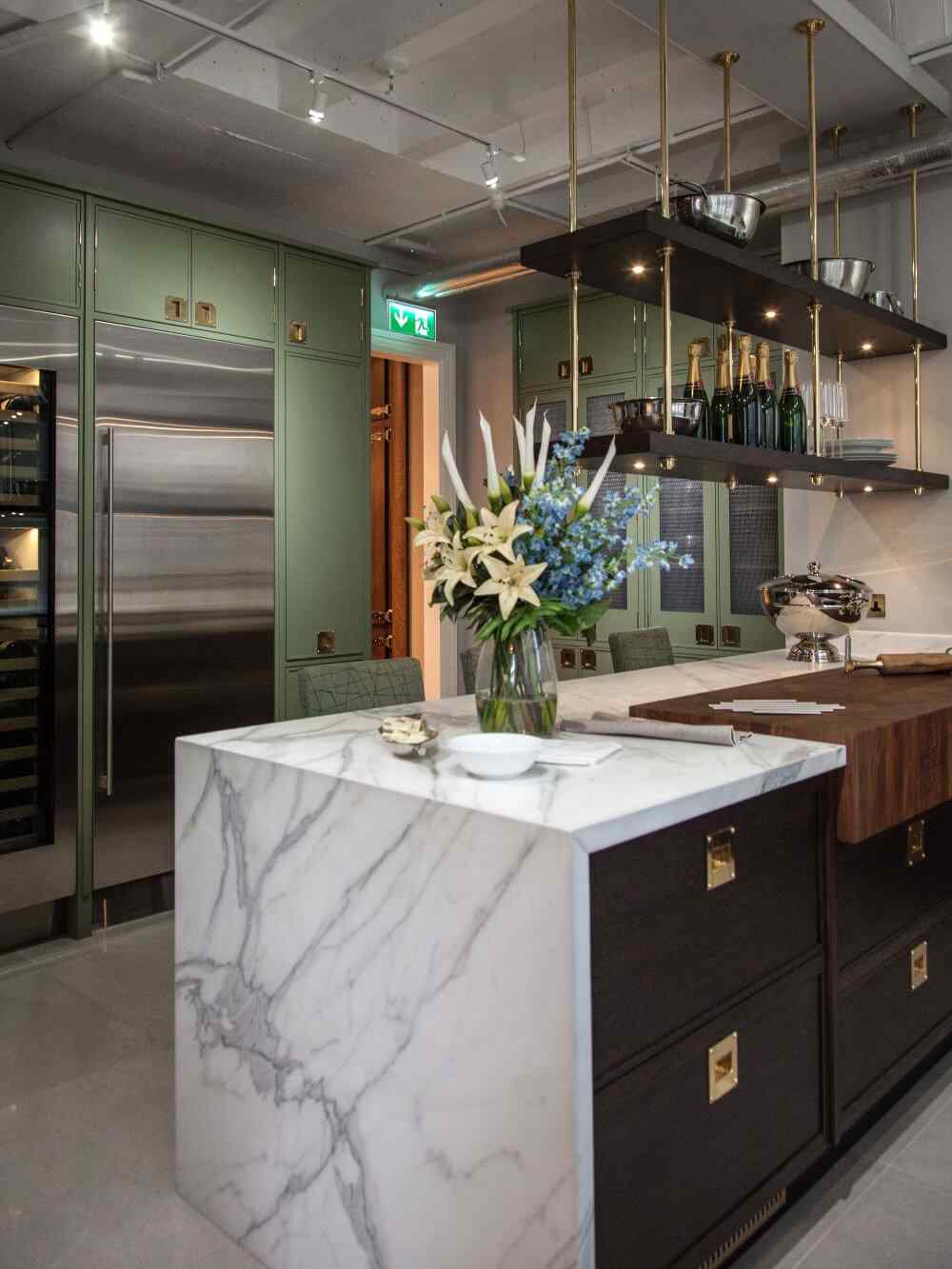
Any slab material can be used to create a waterfall, but make sure the material is strong enough like Silestone to handle the change in orientation. Many marbles and light-colored granites may be too thin or too brittle. Keep in mind that you may need an additional slab to help make this style happen. If you don’t use Silestone, be sure that the two slabs are from the same lot to make sure they match.
Thicker Surfaces & Countertops
Like everything else in the states, bigger (in this case “thicker”) always seems to rear its head. Built up edges (extra-thick looking countertop) has been popular. The thickness of a countertop is usually only visible at its edges. Most countertops tend to fall around 3cm in thickness, although some marbles may only be 2cm, and porcelain slabs can be even thinner. If you want a thicker looking countertop, you have to build up the edge.
This doesn’t have any benefits in terms of durability, but it can make the countertop seem more substantial. It can also allow you to have more choices for the edge treatments, in terms of how decorative the edge may be. This can make the countertop – and the kitchen by extension – seem more luxurious.
It is achieved by taking an additional piece of countertop material and laminating it onto the edge. The entire edge piece is then carved together into the preferred edge treatment, and while the countertop itself may only be 3cm in thickness, the edge may be 4cm or even 5cm, giving the appearance of a thicker, beefier slab.
Porcelain Slabs
Porcelain is becoming more popular it is highly resistant to scratching, staining, or burning… they don’t require as much care as other types of countertop surfaces. Porcelain slabs can take on the look of marble, concrete, granite, or just about any other solid surface countertop.
And now you can find that same material in a large slab up to 10-feet in length but only 12mm thick. You will likely want to include a built-edge on these countertops, as 12mm is very thin when compared with the standard 3cm. Despite their thickness they are extremely durable, and require next to no maintenance to stay looking great long term.
Furthermore, ceramics are considered to have the lowest carbon footprint of any flooring material, the lowest global warming potential, and the lowest fossil fuel resource depletion. That’s tough to beat, Silestone!

